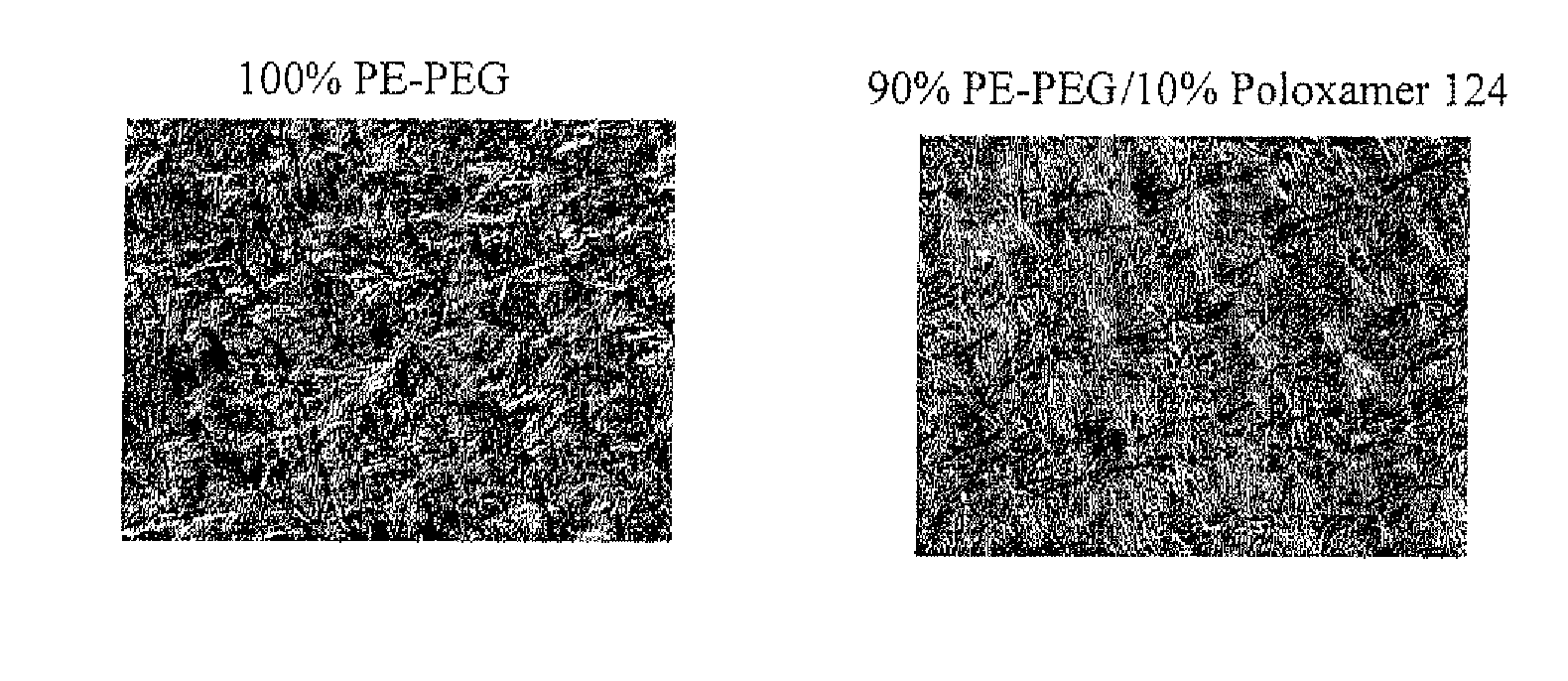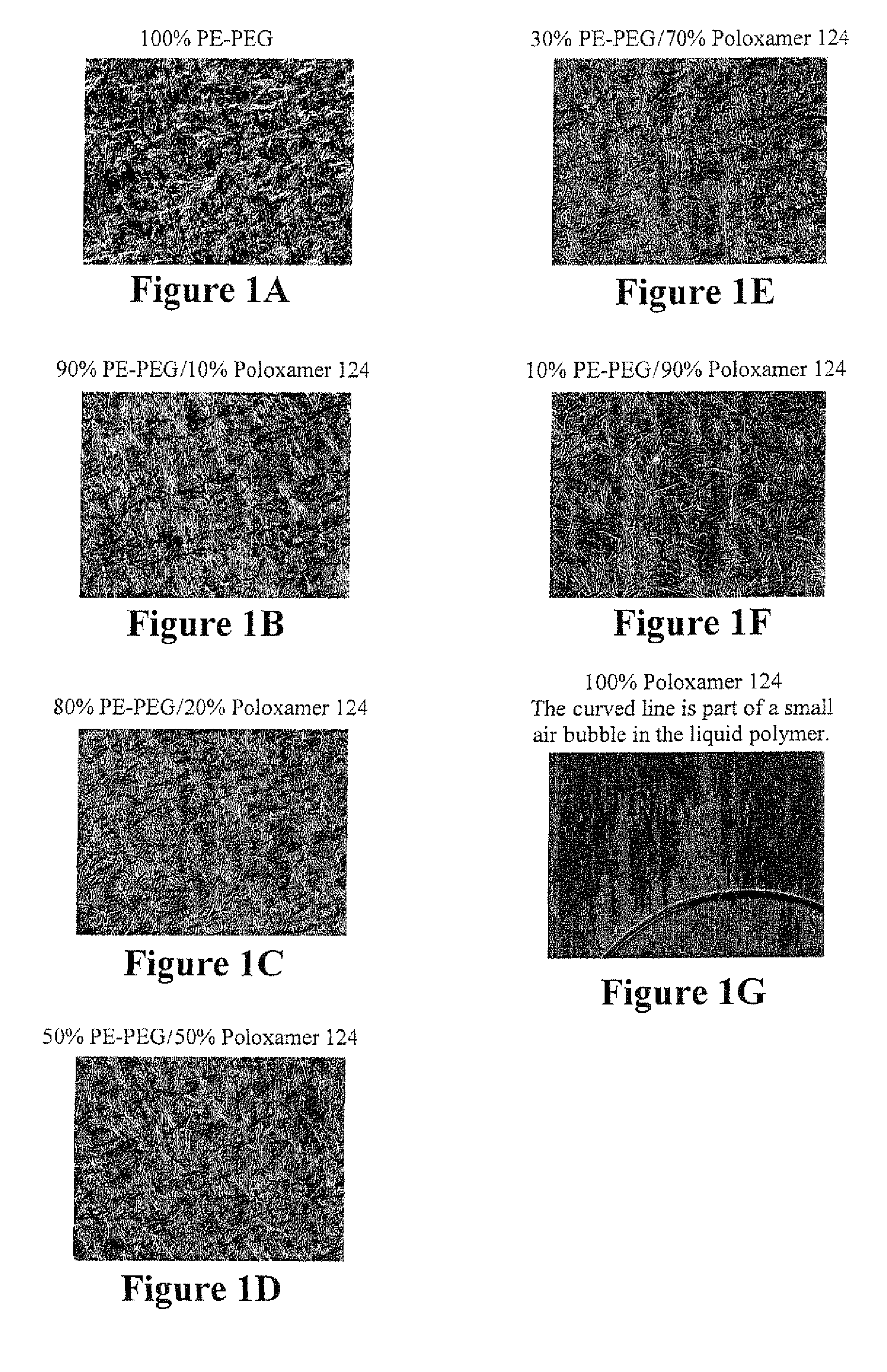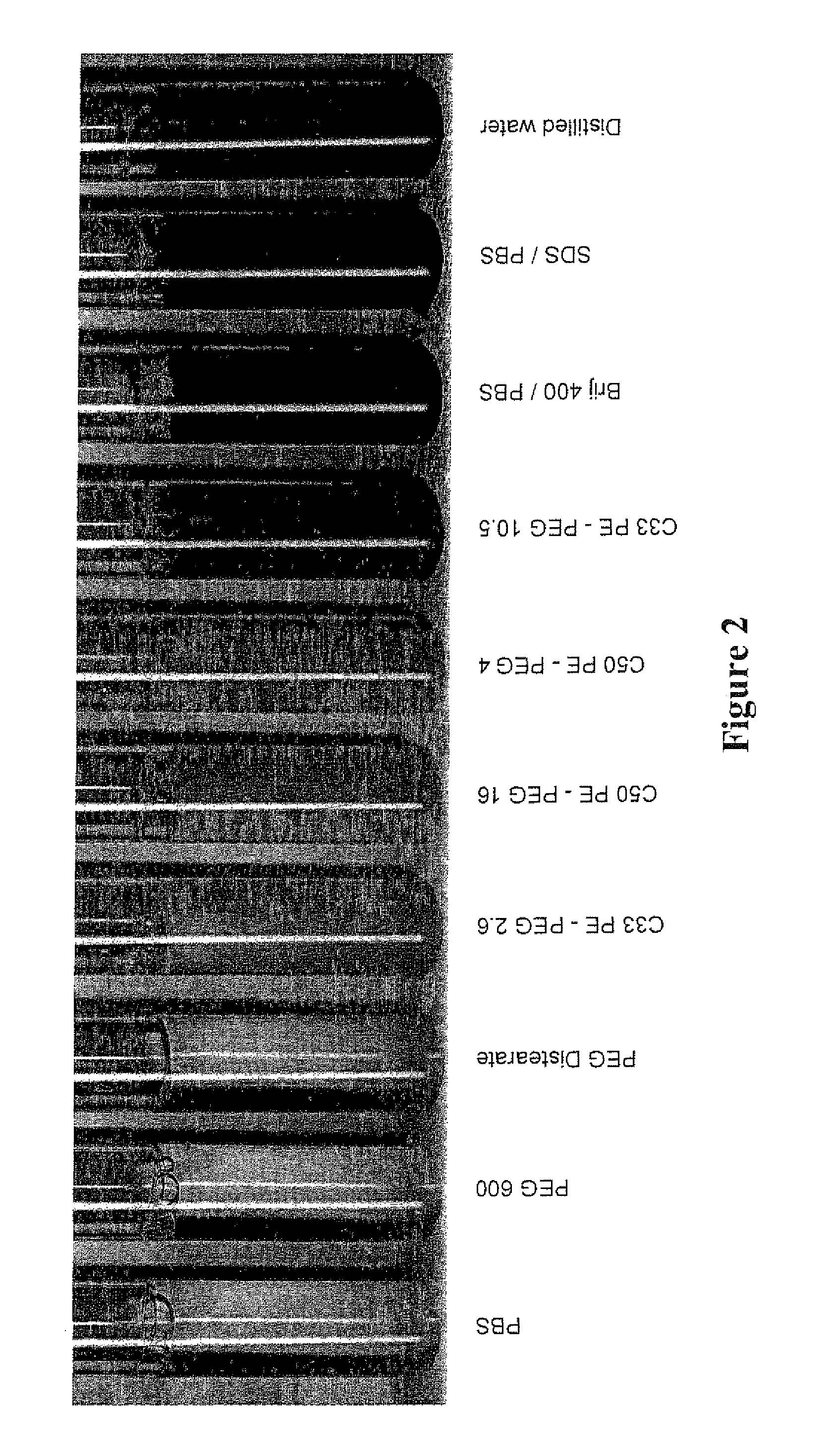Resorbable polymer compositions for use in medicine, dentistry, and surgery
a polymer composition and composition technology, applied in the field of resorbable polymer compositions for use in medicine, dentistry, surgery, can solve the problems of less than ideal applications, less malleability or flowability, and dissimilar physical and mechanical properties of hydrogels, and achieve the effects of less tendency to absorb water, less swelling of implanted materials, and improved resorbability
- Summary
- Abstract
- Description
- Claims
- Application Information
AI Technical Summary
Benefits of technology
Problems solved by technology
Method used
Image
Examples
example 1
Macroscopic Characterization of PE-PEG Blends
[0059]Two different PE-PEGs, C50 PE-PEG 16, and C33 PE-PEG 2.6, were obtained from Sigma-Aldrich (St. Louis, Mo.). These were combined with several different polyalkylene glycol polymers and copolymers, and evaluated as follows
Method 1:
[0060]Appropriate amounts of PE-PEG and the second polymer were placed into a sealed borosilicate glass container, and incubated in a laboratory oven at 125° C. for 24 hours. The samples were then mixed thoroughly while hot, poured into prewarmed nonstick metal molds, and rapidly cooled by placing the mold onto a cold plate maintained at minus 10° C. When removed from the mold, the PE-PEG / polymer blend was in the form of solid bars of approximate dimensions 2″ by 0.6″ by 0.125″.
Method 2:
[0061]Borosilicate glass containers containing 10 g of PE-PEG and the second polymer in appropriate proportions heated in a laboratory microwave oven until as both components were observed to be fully melted (1 min to 2 min)...
example 2
Microscopic Evaluation of PE-PEG / Poloxamer Binary Blends
[0069]A poloxamer-PE-PEG combination that blended well and formed a smooth homogeneous single phase both in the molten and solid state was examined for evidence of any phase separation on the microscopic scale.
[0070]Method: C50 PE-PEG16 (Sigma-Aldrich) was blended with poloxamer 124 (P124) as described in Example 1 in proportions ranging from 10% P124 to 90% P124. While molten, approximately 20 microliters of each blend was placed onto a glass microscope slide preheated to approximately 150° C. and covered with a glass cover slide. The slide was then placed on a microscope equipped with Nomarski differential interference contrast optics, and observed at 400× magnification as the polymer blend cooled to room temperature.
[0071]Results: While liquid, blends of the two polymers were macroscopically water-clear with no turbidity, Schlieren effect, or other evidence of phase separation. Microscopically, it was apparent that the liqui...
example 3
Waxy PE-PEG Composition for Bone Hemostasis
[0075]A preferred waxy material with utility as a bone hemostasis agent may be produced in the following manner. Approximately 900 of C50 PE-PEG 16 and 100 g of poloxamer P124, preferably PLURONIC™ L44NF (BASF), are placed into a sealed PYREX® glass container and heated to a temperature of 110° C. in an oven. The flask is placed on a roller mixer until the contents are fully blended together to form a low-viscosity light yellow liquid, and then allowed to rest at 110° C. until all air bubbles have escaped from the liquid. The liquid is then dispensed directly into TEFLON® coated metal molds maintained at a temperature of 110° C. The molds are covered and allowed to cool to room temperature for up to 24 hours. The solid PE-PEG / polymer blend is removed and placed into individual foil packets lined with a polyethylene coating. These packets are then placed into pouches suitable for sterile implantable devices, and the hemostatic material is st...
PUM
| Property | Measurement | Unit |
|---|---|---|
| size | aaaaa | aaaaa |
| melting points | aaaaa | aaaaa |
| diameter | aaaaa | aaaaa |
Abstract
Description
Claims
Application Information
 Login to View More
Login to View More - R&D
- Intellectual Property
- Life Sciences
- Materials
- Tech Scout
- Unparalleled Data Quality
- Higher Quality Content
- 60% Fewer Hallucinations
Browse by: Latest US Patents, China's latest patents, Technical Efficacy Thesaurus, Application Domain, Technology Topic, Popular Technical Reports.
© 2025 PatSnap. All rights reserved.Legal|Privacy policy|Modern Slavery Act Transparency Statement|Sitemap|About US| Contact US: help@patsnap.com



